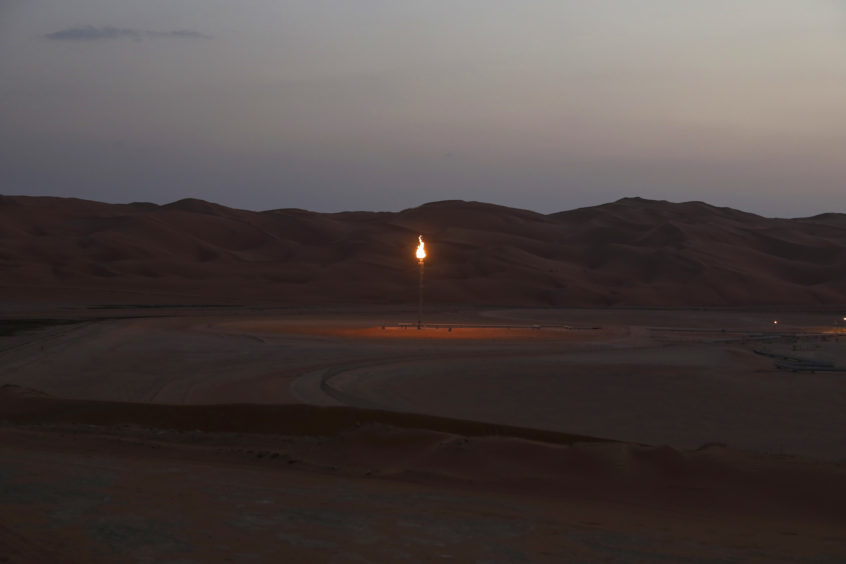
Oil rose for a second day after a drone attack on a Saudi Arabian oil field brought geopolitical risks back into focus, and as the prospect of more U.S.-China trade meetings spurred some investor optimism.
Futures in New York advanced 1.2% after climbing 0.7% on Friday to cap the first weekly gain in three. Yemeni rebels attacked oil and gas facilities at Shaybah field in the southeast part of the kingdom over the weekend, although there was only a small fire and no disruption to production, Saudi Aramco said in a statement. President Donald Trump said the U.S. is talking with China on trade but suggested he wasn’t ready to sign a deal yet.
Crude has fallen around 17% from a peak in late April as the U.S.-China trade war intensified, casting a pall over the global growth outlook. While a series of attacks on tankers and energy facilities in the Middle East have provided some temporary support to prices, oversupply remains the key concern for the market. Meanwhile, there are signs Saudi Arabia is struggling to muster support for its bid to convince OPEC and its allies to cut production further.
The attack in Saudi Arabia is “keeping markets firm,” said Michael McCarthy, chief markets strategist at CMC Markets Asia Pacific Pty in Sydney. The apparent easing of tensions between the U.S. and China is also helping, he said.
West Texas Intermediate crude for September delivery rose 64 cents, or 1.2%, to $55.51 a barrel on New York Mercantile Exchange as of 7:34 a.m. in London. The contract, which will expire on Tuesday, advanced 0.7% last week.
Brent for October settlement increased 79 cents, or 1.4%, to $59.43 per barrel on the ICE Futures Europe Exchange. The global benchmark is trading at a premium of $3.97 a barrel to WTI, near the smallest gap since March 2018.
Yemen’s Houthi rebel leader Abdul Malik al-Houthi said the drone strike was meant to deliver an “important message” to the Saudi Arabian-led coalition. The remote Shaybah field produces around 1 million barrels a day, just under 10% of Aramco’s total production capacity, including some of the highest-quality oil from the kingdom.
Recent phone calls between U.S. and Chinese trade negotiators had been “positive” and more teleconference meetings are planned over the next week to 10 days, White House economic director Larry Kudlow said Sunday. However, President Trump linked the discussions to demonstrations in Hong Kong, saying for the first time on camera that it would be harder to reach a deal if there’s a violent conclusion to the protests.
| Other oil-market news |
|---|
|
Recommended for you
